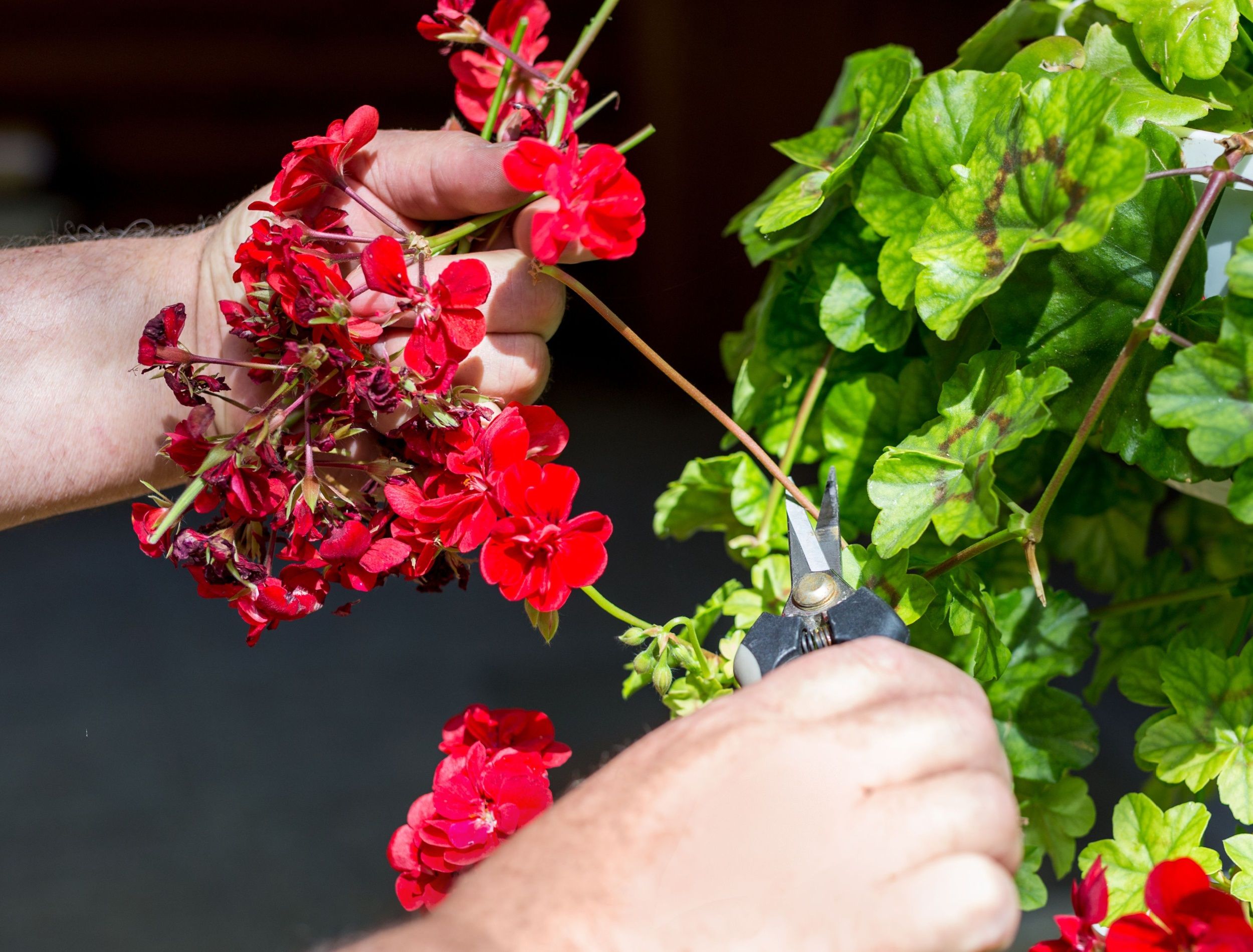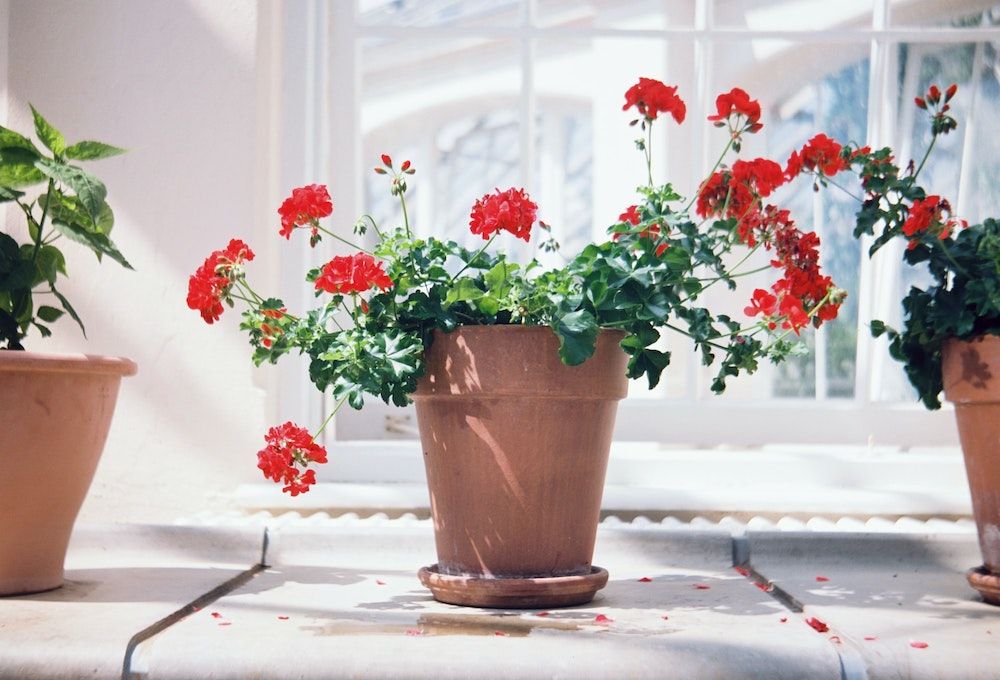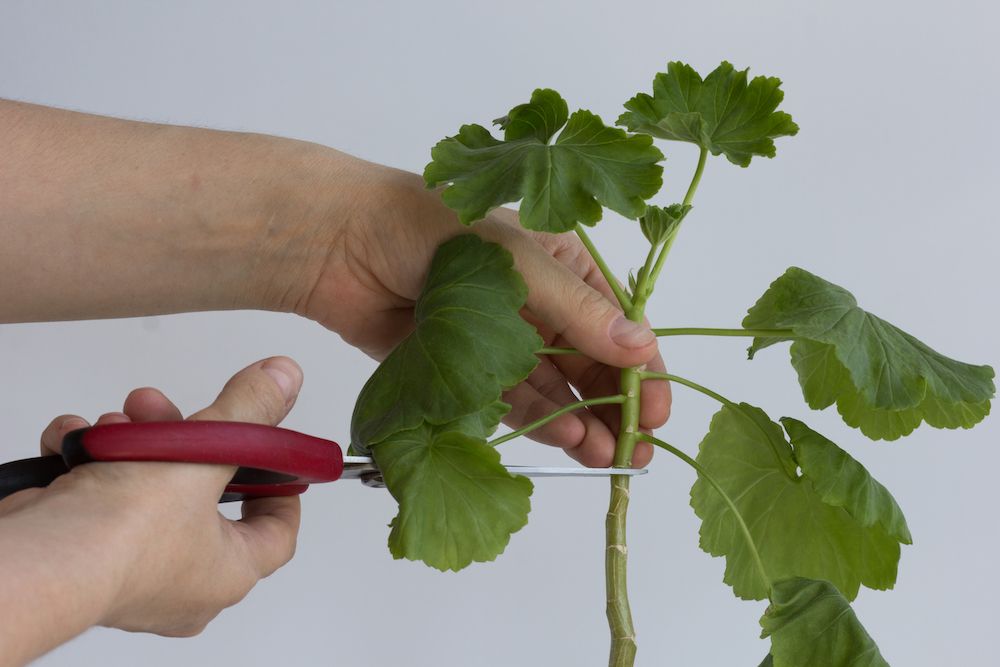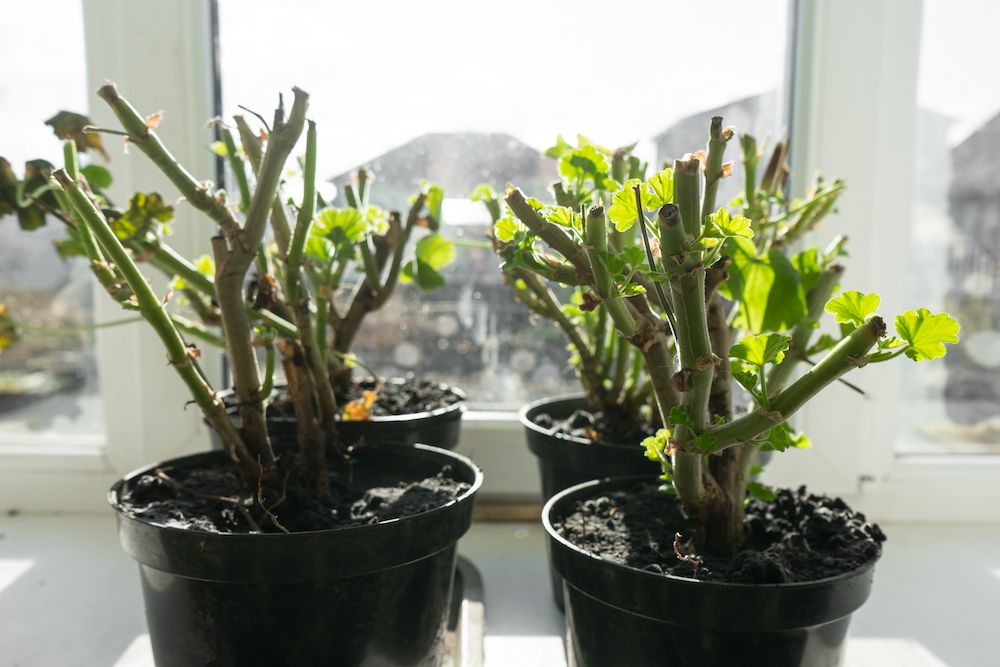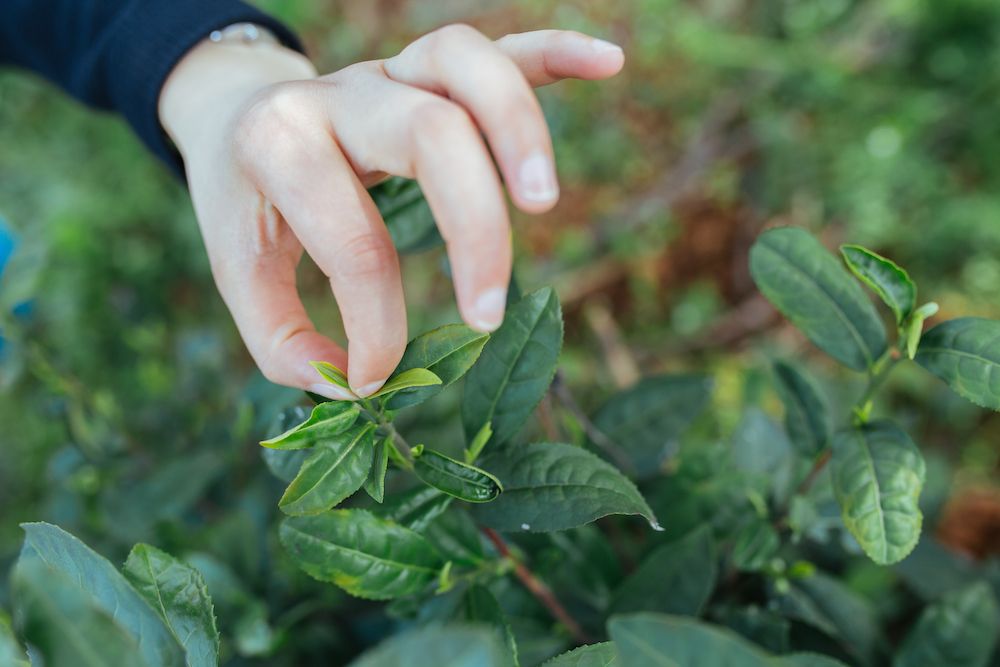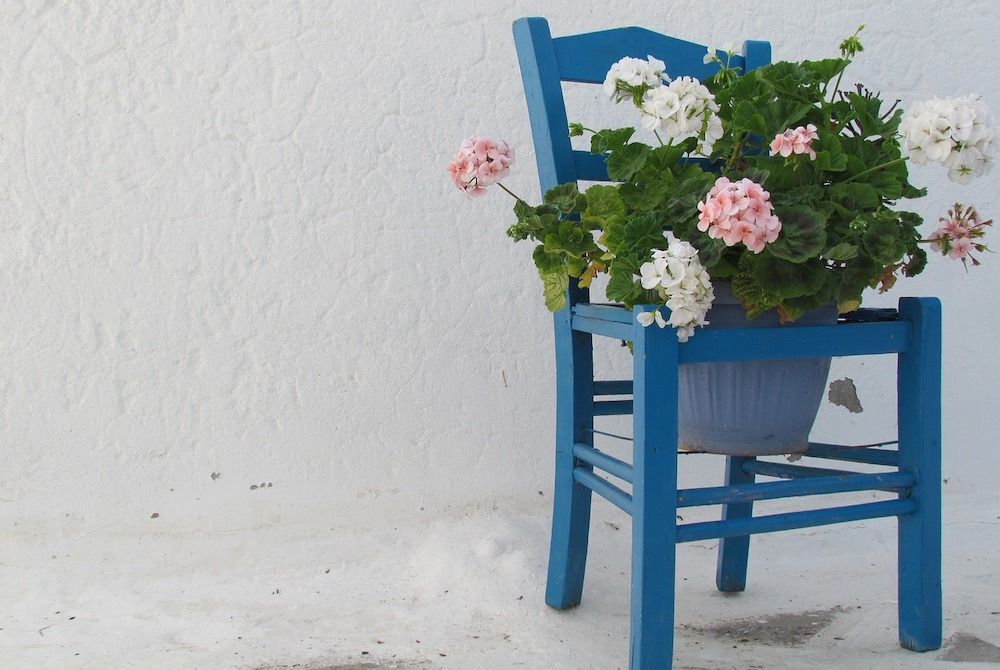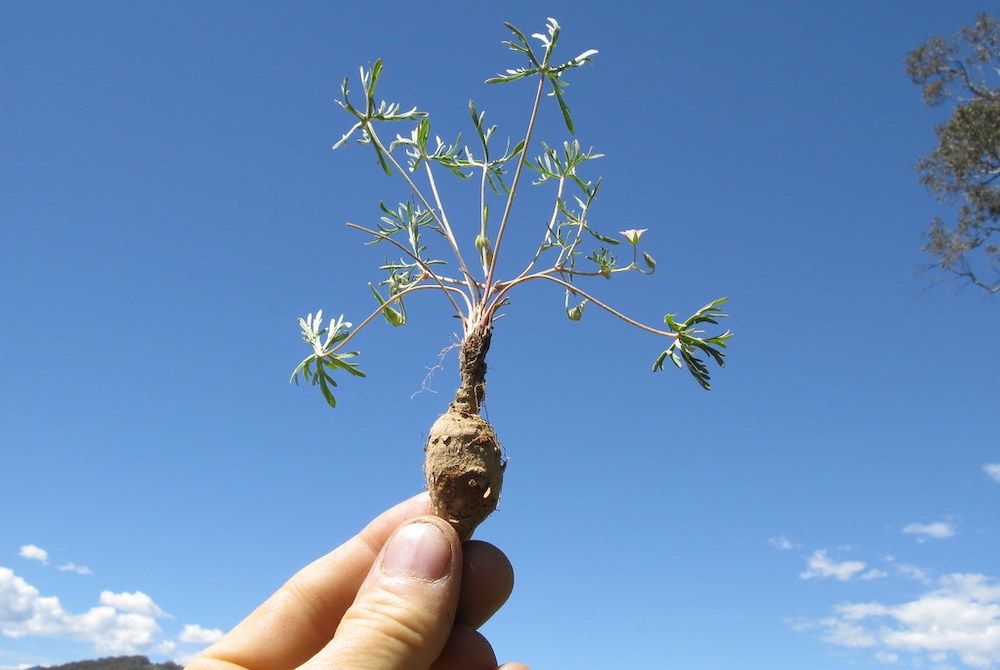Geraniums (Pelargonium) are colorful perennials you can spot from a mile away, and they're one of the easiest plants to overwinter. You can grow them in pots, have them in your garden, and even place them on your balcony. With more than 250 species of floral and foliage varieties, geraniums are hardy to Zone 10, but you can also find other varieties growing in Zone 7 and 8.
They require full sun and moist, well-draining soils to thrive. So, unless you treat them as annuals, move your geraniums indoors before the nighttime temperatures fall below 55 degrees Fahrenheit. During colder months, you should grow your geraniums indoors to help them survive colder months. Below you'll learn the different ways to overwinter them for the next blooming season.
6 Ways to Overwinter Geraniums
1. Bring Them Indoors
Image credits: Gemma Evans via Unsplash
You can overwinter geraniums indoors, so long as you remove them from your garden before the first frost. When overwintering them indoors, place them in a sunny location, preferably south or west-facing window sills, during cold weather.
If you don't get strong, natural light in your home, invest in grow lights that you can use to help your geraniums during long, sunless winters. Maintain daytime temperatures between 65 and 70 degrees Fahrenheit and keep nighttime temperatures at 55 degrees Fahrenheit.
|
How long should your plants stay under the grow light? |
|
Place your geraniums 12 inches under a 40-watt grow light bulb for 12-16 hours daily to see some difference. |
2. Take Cuttings
Image credits: Tatiana Foxy via Shutterstock
Take cuttings as an alternative if you can't bring the entire geranium plant inside for the winter. Using a sharp scissor, take 3 to 4-inch stem cuttings from the terminal ends of the geranium shoots. Pinch the bottom leaves of each cutting before dipping the base in a rooting hormone.
Place the cuttings in vermiculite rooting media or a sphagnum peat moss and perlite mixture. Choose clay or plastic rooting containers with drainage holes on the bottom. After placing your cuttings in the pot, add your preferred rooting mix and gently push it down to keep the cuttings in place. This will also help remove any air gaps. Mist water twice a day for a couple of days before returning to your regular watering schedule.
Remember to test your rooting mix for moisture to avoid under or overwatering your cuttings. Place your newly planted cuttings in a room with plenty of indirect light but not direct sunlight. To prevent your cuttings from wilting, place a large transparent plastic bag or a large plastic bottle over your cuttings to create a temporary greenhouse effect.
|
How long until the geraniums begin to root? |
|
It would take anywhere between six to eight weeks for your geraniums to root. Once they develop healthy roots, gently remove them from the rooting media and plant them in separate pots. |
3. Hard Pruning
Image credits: Tarasenko Andrey via Shutterstock
Taking it a step further than using cuttings, you can opt to hard prune your geranium plant. Hard pruning is when you cut the entire plant to around 3 to 6 inches from the ground before any foliage emerges. The pruning time will depend on the geranium species you're dealing with.
However, you can prune after flowering or in late fall. Pruning after flowering minimizes stress on the plant, allowing it to direct energy into the growth of new stems. The higher the pruning (larger size or number of limbs eliminated), the greater the regeneration that follows.
Remove any dead, damaged, moldy, unhealthy, or diseased plant parts when pruning. If the plant is otherwise healthy, save limbs with buds or blossoms.
4. Pinch Back Shoots
Image credits: happylemon via Shutterstock
Pinching can shape your geranium and encourage the plant to grow more foliage and blooms. All you need to do is literally pinch and remove tender growth at the end of the stem. You can use sharp scissors or shears to cut the top tender growth to save your manicure!
Remember to pinch as closely to the leaf nodes as possible without harming neighboring buds. Your plant will generate two new stems beneath the pinch or cut every time you remove the primary stems.
5. Potting up Individual Plants
Image credits: GERARDMAK via Pixabay
Before the first fall frost, carefully dig up each plant and place it in a big container. After giving each plant plenty of water, set the geraniums in a window with plenty of natural or artificial light.
Your plants can experience transplant shock, but with proper care, they'll bounce back in a few days. Place your geraniums in a cool room that doesn't get too much direct sunlight. The ideal temperature range is between 65 and 70 degrees Fahrenheit and 55 degrees Fahrenheit at night.
For the first few days, mist your newly-transplanted plant twice a day before returning to your regular watering schedule. Invest in a good soil moisture tester to know when your plant needs a drink to avoid under and overwatering.
|
Will the geranium grow out of control in the winter? |
|
If your geranium has grown tall and lanky by the end of winter, prune the plant in early spring and reduce it to 2/3 of its previous height. Continue watering them, and they'll soon regrow their foliage before blooming again. |
6. Overwinter Them as Bare-Root Plants
Image credits: Macleay Grass Man via Creative Commons
Carefully dig your geraniums out before the first fall frost. After digging out your plant, gently shake the soil off your plant's roots and wrap one or two plants in a large paper bag. Store the bag in a room with an ideal temperature of about 50 degrees Fahrenheit, like a garage, shed, cellar, or unheated basement.
Every month, remove the plants from the bag and soak the roots in water for a couple of hours. Let them dry and once they're completely dry, store them again in the large paper bag. A healthy plant's leaves may wither and fall, but the stem will remain green and firm; however, if the stem dries up, the plant won't survive. In this case, you can add it to your compost pile.
In spring, carefully inspect your geranium, remove shriveled and dry parts, prune dead tips, and soak your plant's roots in water mixed with plant food for a few hours. Next, pick a pot with drainage holes, plant the roots in refreshed potting soil, and water thoroughly.
For a couple of days, place your plant away from direct sunlight, and after that, you can place it under a grow light or in a sunny location. If your plant is healthy, it'll bounce back and grow. Then, you can move the plant outdoors a week after the last frost.
Don’t Stop Be-leafing
Geraniums are a gardener's delight due to how low maintenance they are and the ease with which they flourish in various growing media. Overwintering is an effective way of preserving their blooming potential for the next growing season.
Leave your experiences, thoughts, and questions in the comment section, and as always, please share!
Happy Gardening!

